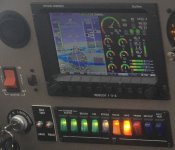JeremyL
Well Known Member
Has anyone done this or have a better thought on the pro v cons of utilizing illuminated push buttons like the ones below for all my switching, master,alt,nav, fuel pump, etc? I’ll be using vpx, so I’m not conference with the rating.
https://www.carlingtech.com/pushbutton-switches-av-avh-series
https://www.carlingtech.com/pushbutton-switches-av-avh-series





